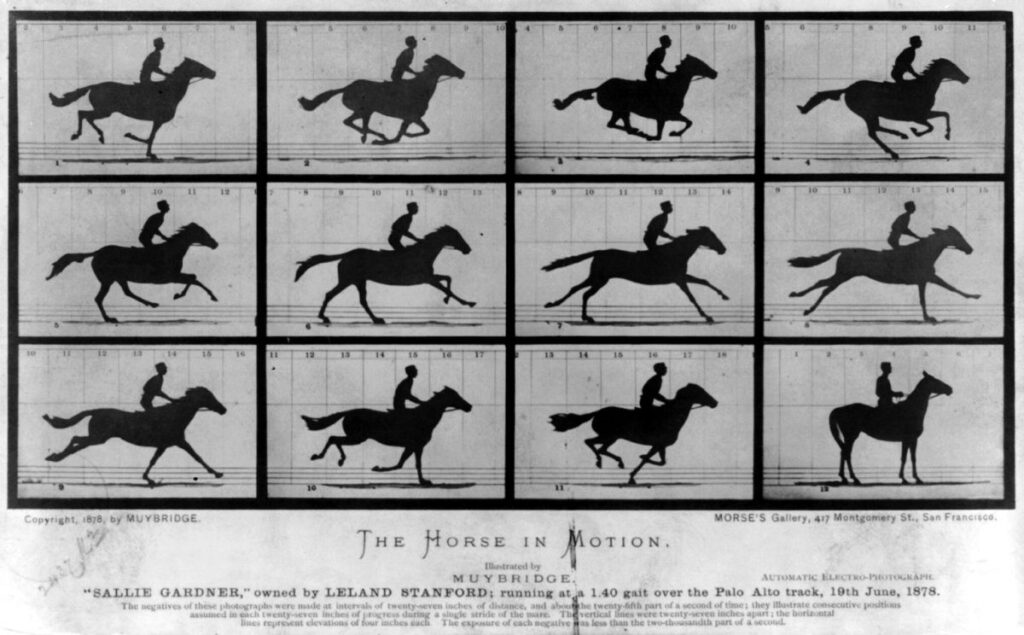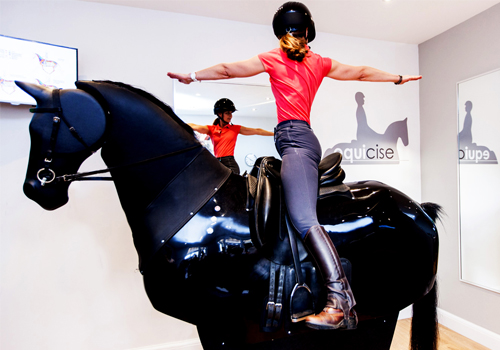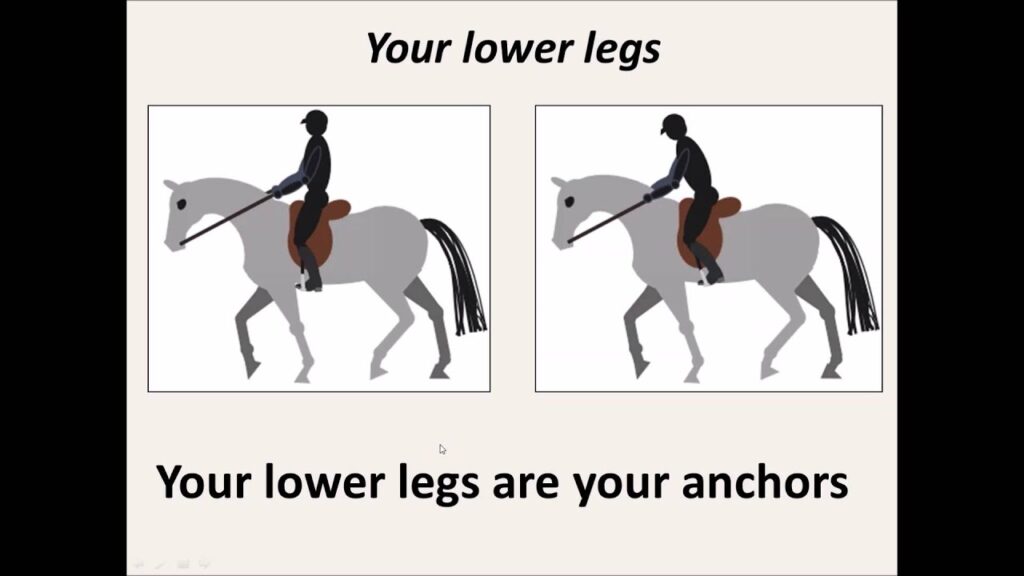So, you want to learn how to maintain proper balance while horseback riding? Well, you’ve come to the right place! Horseback riding is an amazing activity that allows you to connect with these majestic creatures, but it can be quite challenging to maintain your balance, especially if you’re a beginner. Don’t worry though, because in this article, we will dive into the nitty-gritty of maintaining proper balance. By the end, you’ll have all the tips and tricks you need to ride with confidence in the saddle!
Now, let’s talk about the importance of balance while horseback riding. To put it simply, balance is crucial for both your safety and your horse’s comfort. If you’re wobbling around or constantly shifting in the saddle, it can throw off your horse’s balance and make it difficult for them to carry you. Not to mention, it’s not exactly a pleasant experience for you either! But fear not, my friend, because I’m here to share some valuable insights on how you can maintain that perfect equilibrium while riding.
In the upcoming article, we’ll cover everything from the correct positioning of your body to exercises you can do to improve your balance. We’ll also discuss the role of your core muscles in maintaining stability and share some practical tips to help you stay centered in the saddle. So, stay tuned and get ready to tackle any riding challenge that comes your way!
How to Maintain Proper Balance while Horseback Riding
Horseback riding is not only a thrilling and enjoyable activity, but it also requires a great deal of skill and balance. Proper balance is crucial for both the rider’s safety and the well-being of the horse. Without a solid foundation of balance, riders may face difficulties in controlling their horse and may even risk falling off. In this article, we will explore the importance of maintaining balance while horseback riding and provide tips and techniques to help you improve and maintain proper balance.

The Importance of Maintaining Balance in Horseback Riding
Maintaining balance while horseback riding is essential for several reasons. Firstly, it ensures the rider’s safety by preventing falls and accidents. A balanced rider is less likely to lose control and get thrown off the horse. Secondly, proper balance allows the rider to communicate effectively with the horse, providing clear and precise cues through their body movements. Lastly, balanced riding promotes harmony and comfort for both the rider and the horse, allowing for a smoother and more enjoyable riding experience.
The Fundamentals of Balance in Horseback Riding
To understand how to maintain proper balance while horseback riding, it is important to grasp the fundamentals of balance. Balance can be defined as the ability to distribute your weight evenly and maintain your center of gravity over the horse’s center of gravity. Achieving this balance requires a combination of core strength, correct posture, proper alignment, and effective use of the legs and seat.

Common Balance Issues Faced by Riders
Before we delve into specific techniques to improve balance, let’s address some common balance issues faced by riders. Understanding these challenges will help you identify and overcome any balance issues you may be experiencing.
-
Leaning forward or backward: Leaning too far forward or backward can disrupt your balance and put unnecessary strain on your horse. It is important to maintain a neutral position with your torso upright.
-
Gripping with the legs: Gripping tightly with your legs can hinder your ability to maintain balance and communicate effectively with the horse. Your legs should remain relaxed and lightly in contact with the horse’s sides.
-
Tension in the upper body: Tension in the upper body, such as stiff shoulders or clenched fists, can negatively impact your balance. A relaxed and supple upper body allows for better coordination and harmony with the horse’s movements.
-
Inconsistent weight distribution: Uneven weight distribution between the left and right sides of the body can create imbalance. It is important to maintain symmetrical weight distribution to ensure proper balance.
Now that we have identified common balance issues, let’s explore various techniques to improve and maintain proper balance in horseback riding.
Developing a Strong Core for Balance
The core muscles play a crucial role in maintaining balance while horseback riding. A strong core provides stability, posture control, and aids in the rider’s ability to absorb and adapt to the horse’s movements. Here are some exercises to strengthen your core for horseback riding:
-
Planks: Start by assuming a push-up position, with your forearms on the ground. Keep your body straight and engage your core muscles. Hold this position for 30-60 seconds, gradually increasing the duration as your strength improves.
-
Leg lifts: Lie on your back with your legs extended. Lift your legs off the ground, keeping them straight. Lower them back down without touching the ground. Repeat for 10-15 reps, gradually increasing the number as you get stronger.
-
Russian twists: Sit on the ground with your knees bent and your feet elevated slightly off the ground. Hold a weight or a medicine ball with both hands. Twist your torso from side to side, touching the weight or ball to the ground on each side. Aim for 10-15 reps on each side.
In addition to these exercises, practicing yoga and Pilates can greatly improve core strength and stability, which will translate into better balance while riding.

Correcting Posture for Better Balance
Proper posture is essential for maintaining balance while horseback riding. Good posture allows your body to align with the horse’s movements and maintain a stable position. Here are some tips to improve your posture for better balance:
-
Imagine a string pulling you up: Visualize a string attached to the top of your head, gently pulling you upwards. This will help lengthen your spine and keep your posture upright.
-
Relax your shoulders: Allow your shoulders to relax and drop down naturally. Tension in the shoulders can affect your balance and fluidity of movement.
-
Engage your core: Draw your belly button towards your spine to engage your core muscles. This will provide stability and support for your upper body.
-
Maintain a neutral pelvis: Avoid arching your lower back or tucking your tailbone under. Keep your pelvis in a neutral position, allowing your spine to align naturally.
You can also perform specific stretches to improve your posture. Focus on stretching the chest, shoulders, and hip flexors to release any tension and allow for better alignment.
Finding Proper Alignment in the Saddle
Proper alignment in the saddle is crucial for maintaining balance and effectively communicating with the horse. When properly aligned, the rider’s three points of contact – seat bones, legs, and feet – should form a straight line. Here are some tips to achieve and maintain proper alignment:
-
Seat bones: Sit on your seat bones, which are the bony protuberances at the base of your pelvis. Avoid sitting too far forward or too far back, as this can disrupt your balance and interfere with the horse’s movement.
-
Leg position: Allow your legs to hang naturally, with your heels directly under your hips. Ensure that your legs are relaxed and softly in contact with the horse’s sides.
-
Foot position: Position your feet parallel to the horse’s sides, with the toes pointing forward. Avoid pointing your toes outward, as it can affect your balance and stability.
By focusing on proper alignment, you will create a solid foundation for maintaining balance and effectively communicating with your horse.

Using Your Legs and Seat for Balance
The legs and seat play a vital role in maintaining balance while horseback riding. They provide stability, support, and aid in absorbing and adapting to the horse’s movements. Here are some techniques to effectively use your legs and seat for balance:
-
Leg stability: Relax your legs and allow them to gently wrap around the horse’s barrel. Avoid gripping tightly with your thighs or knees, as it can interfere with your balance. Use your legs to maintain a light and consistent contact with the horse’s sides.
-
Seat connection: Your seat should connect firmly with the saddle, allowing you to feel the horse’s movements. Developing a deep and independent seat will help you stay balanced and secure while riding.
-
Weight aids: Shift your weight slightly forward, backward, or to the sides to communicate with the horse. For example, applying more weight to your inside seat bone can signal the horse to turn in that direction.
By developing a strong connection with your horse through your legs and seat, you will enhance your balance and overall riding performance.
Maintaining a Relaxed Upper Body
Tension in the upper body can greatly impact your balance while horseback riding. A rigid and tense upper body can interfere with your ability to follow the horse’s movements and maintain a stable position. Here are some exercises and techniques to help relax your upper body:
-
Shoulder rolls: Roll your shoulders in a forward and backward motion, allowing them to relax and release any tension. Repeat this exercise several times before and during your riding sessions.
-
Arm circles: Extend your arms out to the sides, and make small circles with your hands. Gradually increase the size of the circles while maintaining relaxed and supple arms.
-
Deep breaths: Practice deep breathing exercises to release tension and promote relaxation throughout your entire body. Inhale deeply through your nose, and exhale slowly through your mouth, focusing on relaxing your upper body.
In addition to these exercises, maintaining a soft and supple grip on the reins is essential for a relaxed upper body and effective communication with your horse.

Understanding Weight Distribution
Proper weight distribution is essential for maintaining balance on horseback. Distributing your weight evenly allows you to stay centered and in control of your movements. Here’s what you need to know about weight distribution:
-
Center of gravity: Your center of gravity is the point within your body where all the mass is evenly distributed. To maintain balance, your center of gravity should align with your horse’s center of gravity.
-
Symmetrical weight distribution: Ensure that your weight is evenly distributed between both seat bones. This will promote balance and prevent leaning to one side.
-
Awareness of shifts in weight: Pay attention to any shifts in your weight and make necessary adjustments. For example, when turning, shift your weight slightly into the direction of the turn to maintain balance and aid in the horse’s movement.
By maintaining a symmetrical weight distribution and staying aware of any weight shifts, you will achieve better balance while riding.
Maintaining Balance at Different Gaits
Maintaining balance at different gaits can pose unique challenges for riders. Here’s a breakdown of the challenges and strategies for balance at each gait:
-
Walk: The walk is a four-beat gait that provides a comfortable and relatively stable rhythm. Focus on maintaining a relaxed and supple body, allowing your hips to naturally follow the horse’s motion.
-
Trot: The trot is a two-beat diagonal gait that can be bouncy and challenging to sit. Use your legs and seat to absorb the motion and follow the horse’s movement. Practice rising trot, where you stand up slightly in the stirrups with each diagonal pair of legs, to provide a smoother and more balanced ride.
-
Canter: The canter is a three-beat gait that can feel fast and powerful. Maintain a deep and secure seat, following the horse’s motion with your hips. Focus on remaining relaxed and balanced, using your legs and seat to influence the pace and direction.
Reacting to Horse’s Movements for Balance
One of the keys to maintaining proper balance while horseback riding is being able to follow the horse’s movements. Developing an independent seat will enable you to react and adapt to the horse’s actions. Here’s how you can enhance your ability to follow your horse:
-
Hip flexibility: Practice hip-opening exercises to increase your range of motion and flexibility in the saddle. This will allow your hips to naturally follow the horse’s movements and maintain balance.
-
Suppleness in the lower back: A supple lower back facilitates fluidity in your seat and allows you to absorb the horse’s movements. Perform lower back stretches and incorporate exercises that promote a flexible spine.
-
Effective rein and leg aids: By using subtle and precise rein and leg aids, you can communicate your intentions to the horse without disrupting your balance. Develop an understanding of how to use your aids effectively to maintain harmony and balance.
Developing a Strong Lower Body for Balance
A strong lower body is vital for maintaining balance while horseback riding. Strong legs and lower body muscles provide stability and aids in absorbing and adapting to the horse’s movements. Here are some exercises to strengthen your lower body:
-
Squats: Stand with your feet shoulder-width apart and lower yourself down into a squat position. Keep your knees in line with your toes and your back straight. Repeat for 10-15 reps, gradually increasing the number as your strength improves.
-
Calf raises: Stand with your feet hip-width apart and rise up onto your toes, then lower back down. Repeat for 10-15 reps, gradually increasing the number as you get stronger. You can perform these exercises both on the ground and while mounted on a horse.
-
Lunges: Step forward with one leg, bending both knees to create a lunge position. Ensure that your front knee is directly above your ankle, and your back knee is hovering slightly above the ground. Repeat on each leg for 10-15 reps.
By incorporating lower body exercises into your routine, you will develop a strong foundation and improve your balance while horseback riding.
Maintaining Balance on Uneven Terrain
Riding on uneven terrain presents additional challenges for maintaining balance. Here are some techniques to help you navigate and balance on rough terrain:
-
Relaxation: Stay relaxed and supple, allowing your body to follow the horse’s movements. Tension in your body can be magnified on uneven terrain and disrupt your balance.
-
Rhythm and balance: Maintain a consistent rhythm with the horse’s movements, allowing your body to softly absorb any bumps or changes in the terrain. Focus on staying centered and balanced throughout the ride.
-
Using your legs as shock absorbers: Use your legs to flex and absorb any sudden jolts or changes in the terrain. This will provide stability and help you maintain your balance.
Incorporating trail riding and obstacle courses into your training routine can also greatly improve your balance on uneven terrain.
Balance and Safety Practices for Jumping
Jumping requires a high level of balance and coordination. Here are some key considerations to ensure proper balance and safety while jumping:
-
Secure two-point position: The two-point position allows you to clear obstacles while maintaining balance. Practice riding in the two-point position, which involves rising out of the saddle with your seat slightly above the saddle and your body leaning forward. This position provides stability and allows your horse’s movement over the jump.
-
Following the horse’s motion: As you jump, follow the horse’s motion with your hips and upper body. Maintaining a supple and aligned position will help you maintain balance and stability.
-
Effective release: Give your horse a generous release with your hands over the jump to allow them to stretch their neck and maintain their own balance. Avoid any sudden or restrictive movements, as they can disrupt your balance and compromise the horse’s safety.
By practicing proper jumping techniques and exercises, you can enhance your balance and confidence when tackling obstacles.
Dealing with External Factors Affecting Balance
External factors such as weather conditions, distractions, and fear can affect your balance while riding. Here are some tips for maintaining balance in challenging environments:
-
Weather conditions: Strong winds, rain, or slippery surfaces can impact your balance. Adjust your riding technique and speed accordingly, and stay alert to any potential hazards.
-
Handling distractions: Focus on maintaining your concentration and connection with your horse. Minimize external distractions and stay present in the moment.
-
Managing fear: Riding in challenging environments can evoke fear or anxiety. Practice relaxation techniques, such as deep breathing or visualization, to help manage fear and maintain a calm and balanced state.
Conclusion
Maintaining proper balance while horseback riding is vital for your safety and the harmony between you and your horse. By developing core strength, correcting your posture, finding proper alignment, using your legs and seat effectively, and maintaining a relaxed upper body, you can greatly enhance your balance and riding performance.
Additionally, understanding weight distribution, reacting to your horse’s movements, and developing a strong lower body will further improve your balance in the saddle. Lastly, practicing in different gaits, navigating uneven terrain, and mastering jumping techniques will further enhance your balance and confidence.
Remember, developing and maintaining proper balance is an ongoing process that requires consistent practice and awareness. By incorporating the tips and techniques discussed in this article, you will be well on your way to maintaining proper balance and enjoying a safe and satisfying horseback riding experience.